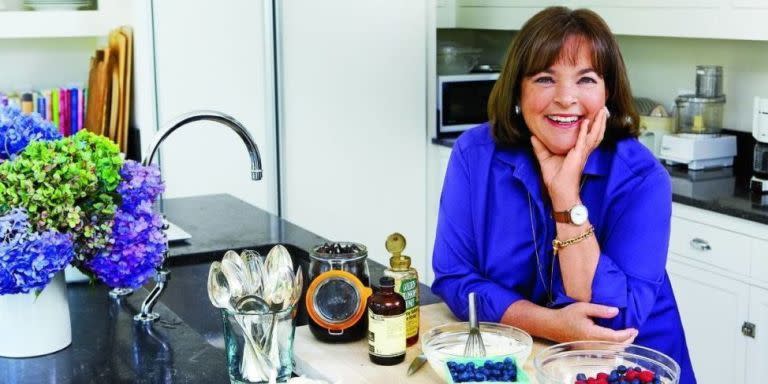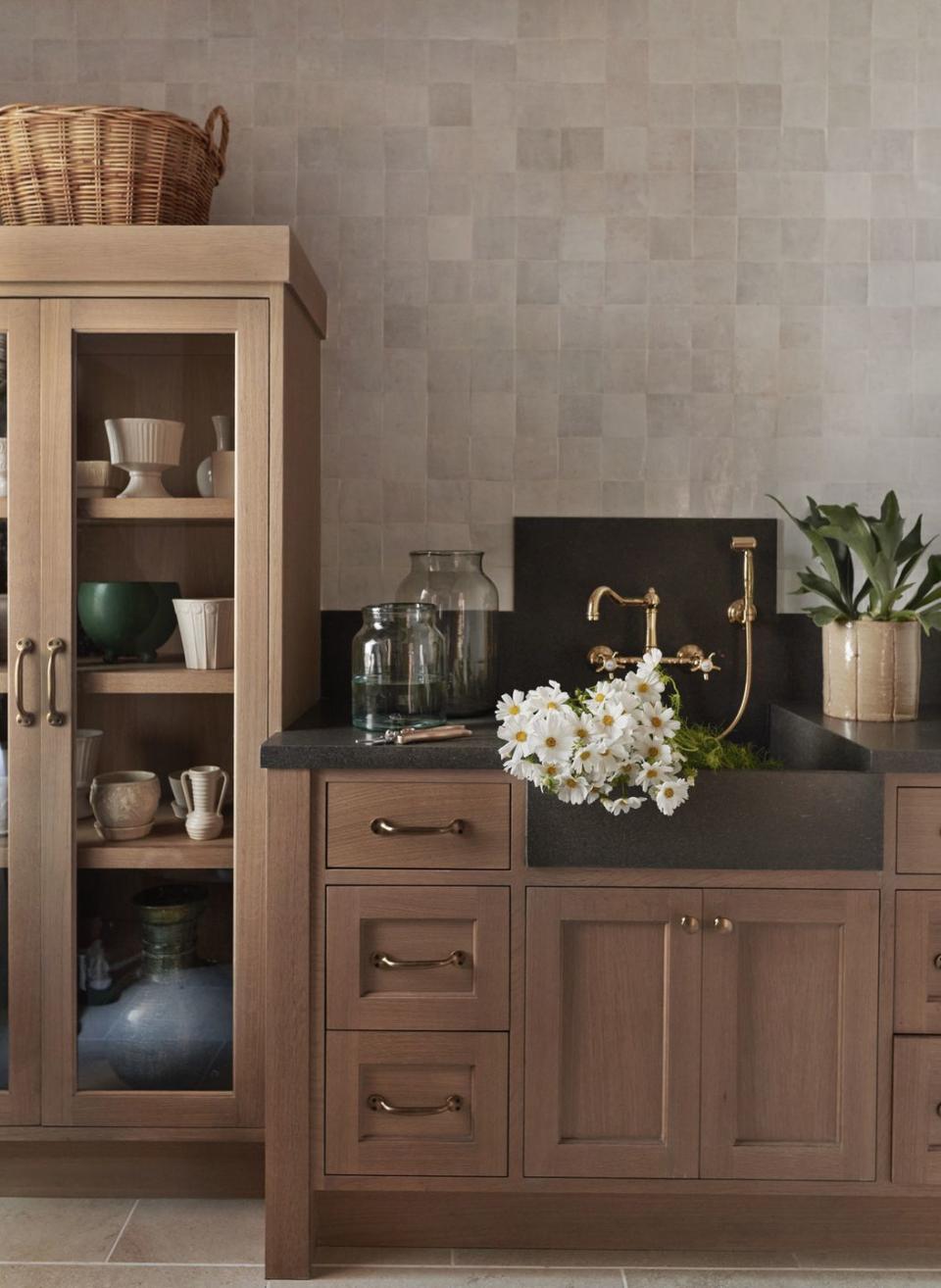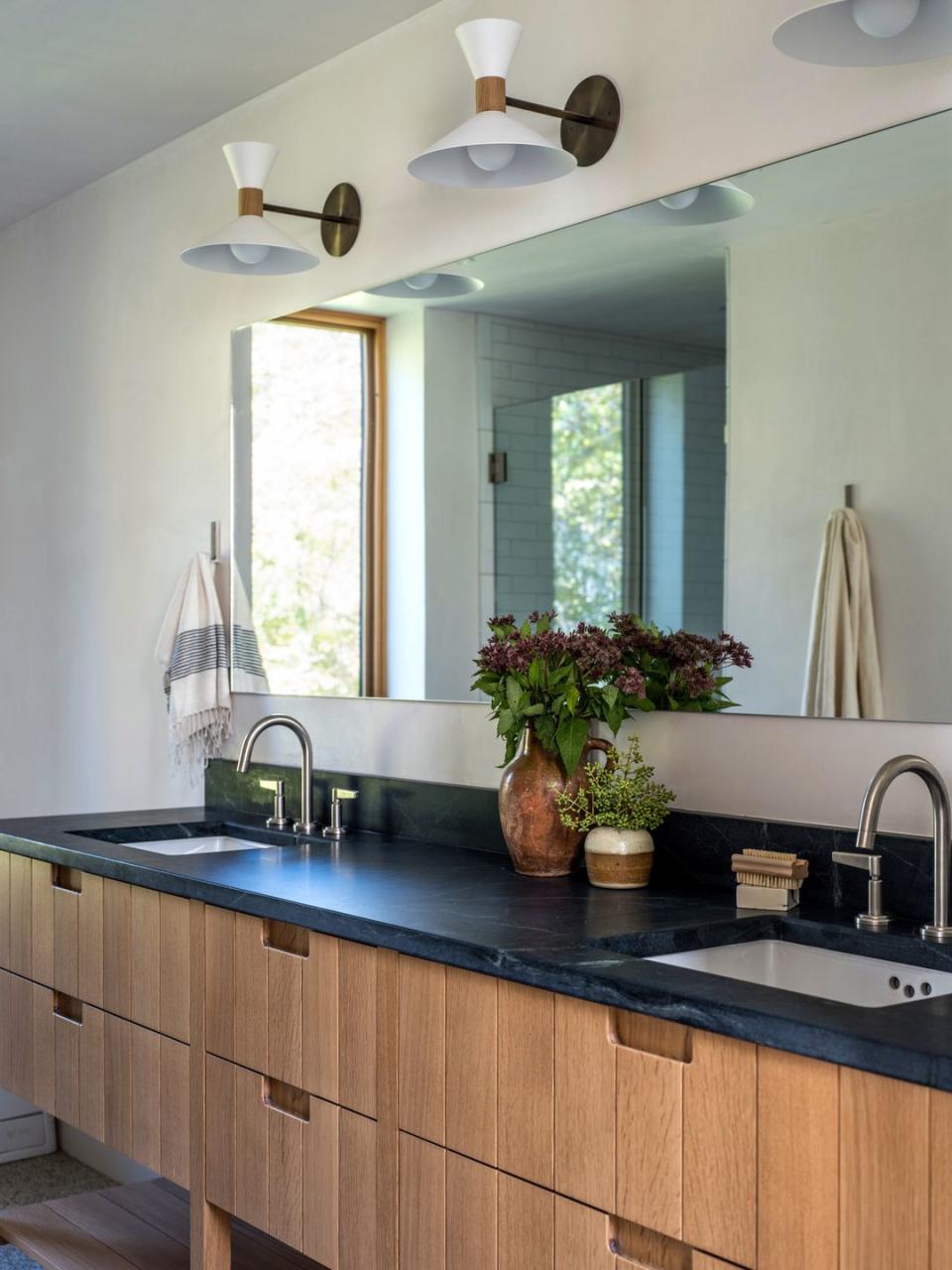Why Designers Are Opting for Soapstone Kitchen Countertops

"Hearst Magazines and Yahoo may earn commission or revenue on some items through these links."
A soapstone counter is inarguably beautiful, durable and even eco-friendly. Perhaps that's why we're seeing more and more designers choose it—and why searches for soapstone countertops have jumped an eye-popping 450 percent over the past five years, according to Google Trends. A soapstone slab has a lot going for it: It's less likely to chip and easier to care for than granite or marble, and it combines the heat resistance of manmade materials like quartz with the beautiful inherent variation of a natural stone. (Which it is.) But the very things that make a soapstone counter so desirable and popular, like that variation, can also have their downsides—especially if you don't know to expect them.
We interviewed home cooks and stone fabricators to find out everything you need to know about a soapstone counter before you decide to install one in your kitchen or bathroom. Read ahead to get the scoop on the average cost, pros, and cons.
What Is Soapstone?
As its name implies, soapstone is a natural material with a smooth, slippery-when-wet texture. That's due to its high percentage of talcum, the softest mineral out there (yes, it's the same thing used to make talcum powder). Although soapstone feels soft to the touch, it's actually very hard. In fact, if you hit the corner of a slab of soapstone with a hammer, it'll dent rather than chip, says stone fabricator Peter Brooks of Peter Brooks Stone Works in Wood-Ridge, New Jersey. That helps it age well.
Speaking of aging well, soapstone is also famous for its beautiful, lived-in aesthetic. A soapstone counter is the quintessential finishing touch for a modern farmhouse kitchen, though it complements many design styles. You've seen it in the personal homes of Martha Stewart and Ina Garten. It also equips the home kitchen of Jessie Sheehan, a TikTok-famous baker and cookbook author, most recently of Snackable Bakes.
"My husband grew up going to an old dairy farmhouse with his family, and the soapstone sink in the kitchen still had a ring in it that was left from the milk pails that used to be set there," Sheehan says. "We love that a soapstone counter is kind of soft and informal, that it showcases all its imperfections."

How Much Do Soapstone Counters Cost?
Soapstone slabs cost $70 to $120 per square foot on average, according to Caesarstone. By comparison, Danby marble counters cost around $75 to $90 per square foot. Soapstone that has a higher talc content will be less expensive due to its softer nature. A higher talc content slab is totally to use for a counter, but it will show a bit more wear and tear over time due to its increased softness.
Soapstone Counter Pros
From its timeless beauty to its low maintenance requirements, a soapstone counter is a very cook-friendly choice.
Timeless Beauty
Soapstone's soft, matte color is a big reason it's so covetable. You see it most often on the grayscale, ranging from light gray to black; certain varieties can have white and gray veining. You can also find soapstone with blue and green undertones. Those rare finds tend to cost more than traditional black or gray, which are more common.

Ultra Dense
In addition to being hard, soapstone ranks high on the density scale (which indicates how porous a stone is), surpassing both marble and even granite. That means soapstone is especially resistant to staining and discoloration over time because it won't soak up liquids or residues.
Eco Conscious
Soapstone is chemical-free, start to finish. Manmade composite countertops can contain synthetic bonding agents and chemical components like PFOAs to make them resistant to grease, water, and staining. Because soapstone is mined from the earth, it contains no synthetic chemicals. And unlike other natural stones, soapstone doesn’t require a chemical sealant to protect its surface upon installation or for maintenance.
Heat Safe
Soapstone is the stuff fireplaces, hearths, and science class lab tables are made of, which is to say it's incredibly heat resistant. Sitting down a hot pan or baking tray straight out of the oven won’t crack or damage the stone in any way. Stones like granite and quartzite share this useful property.
Citrus Friendly
Cooks love soapstone because it doesn’t react to acids, like lemon juice or tomato sauce. Those and other highly acidic foods can discolor or bleach fussier stones. You don't have to worry about sitting down sauce-covered spoons, cartons of juice, cocktail mixers, or cutting boards when you have a soapstone counter.
Made for DIY
If you've got a circular saw and know how to use it, you can size a slab of soapstone in your own workshop. It's so soft, all you need is a stone-friendly blade.

Easy to Repair
A quick sanding and oiling can remove minor nicks and scratches (which soapstone is known to accrue over time). You can do the same thing to reset the stone if its patina starts to look uneven. Simply sand the darker portion of stone and oil it to reset the surface. It should wear more evenly going forward.
Wears Well
Soapstone darkens and develops a natural patina over time. It will change from month to month and develop character over the years. For instance, a light gray will sink into a rich, dark gray, and a black will simply get deeper. Some homeowners love this—and some don’t.
Soapstone Counter Cons
A soapstone counter isn't all beauty and warmth. Soapstone is finicky in ways that could frustrate you if don't have the patience or interest in keeping it looking its best.
Scratch Prone
Because of its innate softness, soapstone shows knife marks and other scratches if you chop food directly on its surface. (No matter your counter surface, we always recommend using a cutting board to protect both your counters and your knives.) Even a dropped glass or can of food can result in a dent or nick. If seeing such an imperfection would annoy you, you might not want to use it on a big kitchen island where damage is likely to happen. You could save it for a lower traffic area, like an edge countertop. You could also opt for a similar looking material that's less prone to scratches. Brooks recommends black granite: Vermont black, Jet Mist, and Black Absolute are three common varieties that closely resemble soapstone.
Needs Oiling
Soapstone requires oiling when it's installed and reoiled regularly for the first few years, says Brooks. This isn't expensive or involved—you just use mineral oil from the drugstore—but it's a task that has to be done. (No such maintenance is required for manmade materials like quartz). "Soapstone eventually gets saturated with mineral oil," says Brooks, at which point it requires less frequent oiling. "But it still needs to be kept up with in order for it to look its best."
Ages Inconsistently
When you oil light gray or greenish soapstone, the oil deepens the color until it almost turns black. As the oil dries out, the color lightens up again, but it can do so unevenly and look patchy. "Within the first year it will happen pretty quickly," says Brooks. "Then over time it happens because it’s a living, breathing stone."
The Bottom Line
A soapstone counter isn't for everyone. It scratches easily and has an unpredictable patina, plus it requires regular oiling. But if that doesn't bother you, it could be the best countertop for your kitchen or bathroom. Not only is soapstone beautiful, but it's also heat resistant and relatively low maintenance. It has a lived-in, comfortable look and feel unlike other trending, more polished stone surfaces.
You Might Also Like

